Last month, former RBA researcher turned chief economist at the Centre for Independent Studies (CIS) tweeted the below claiming those wanting the government to run a lower (historical) immigration program to ease housing pressures are “misanthropes” that dislike migrants:
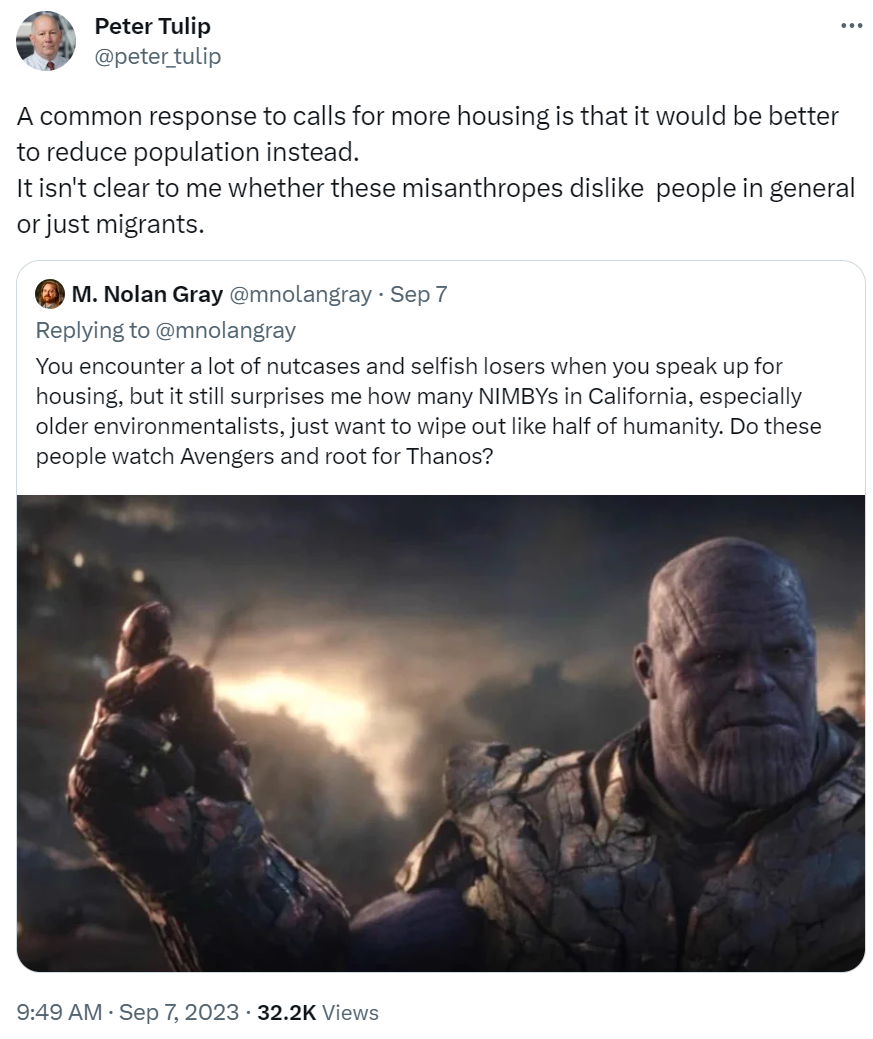
On Tuesday, Tulip tweeted the below imploring Australia’s politicians to embrace Yimbyism:
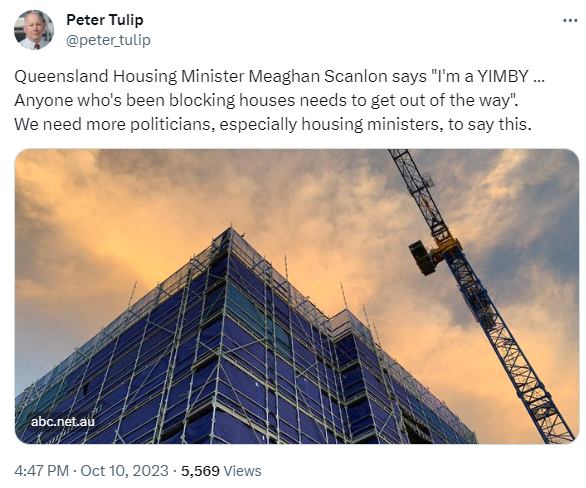
Peter Tulip is chief economist of the CIS and the former head of research at the RBA. Yet, anyone studying high school economics would quickly discover that the housing market has a supply side and demand side.
Tulip’s examination of the housing market makes it appear as if there is only a supply side. The demand side is almost never mentioned. Why is this the case?
Tulip’s biased narrative deliberately misses the fact that Australia witnessed the largest housing construction boom in its history over the prior decade. We built more homes than ever before as a nation:
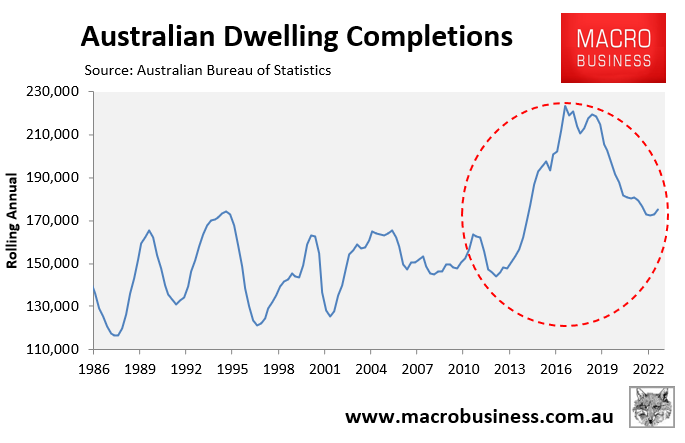
According to OECD data, Australia also built more houses per capita than the majority of other OECD countries:

In 2020, Australia placed fourth in the OECD for housing construction, the same position it held in 2011.
In addition, Australia has one of the highest shares of construction workers in the OECD:

Therefore, the argument that Australia is lousy at building homes is disingenuous and fails the evidence test.
The fundamental cause of Australia’s housing shortage is because we have run one of the world’s largest immigration programs, thereby guaranteeing that housing demand always outpaces supply.
From 1992 to 2002, Australia’s net overseas migration (NOM) averaged 96,000 per year, whereas population growth averaged 216,000 people per year.
Australia’s NOM averaged 190,000 from 2000 to 2022, with population growth averaging 328,000 persons each year. This included the negative NOM recorded over the pandemic.
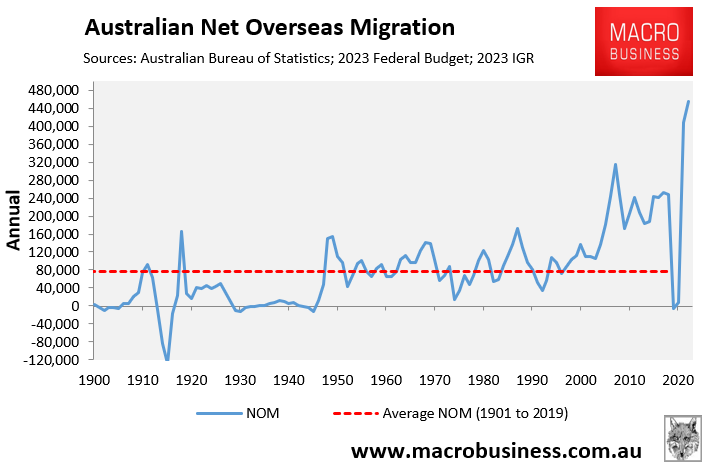
Australia’s population has grown by 7.5 million people (40%) this century, marking the country’s largest population increase on record.
This unprecedented population expansion outpaced the previous decade’s record construction boom, resulting in Australia’s present housing shortage:
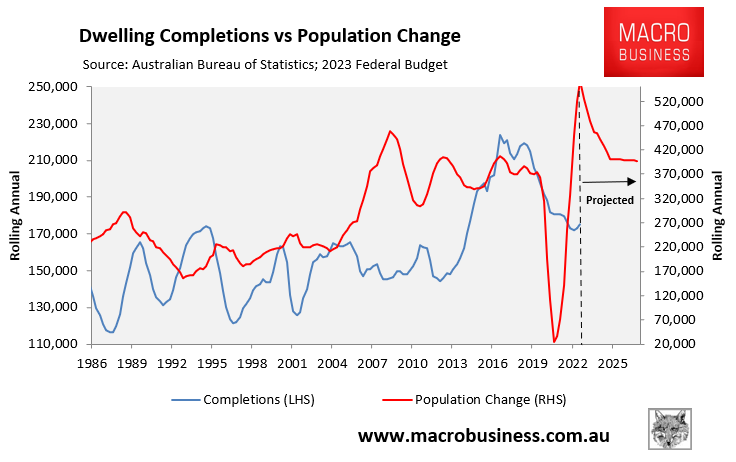
The May federal budget projected that Australia’s population will grow by 2.18 million people over five years (equal to the population of Perth), driven by a NOM of 1.5 million (equivalent to the population of Adelaide).
But current population growth rates have already outpaced budget projections:
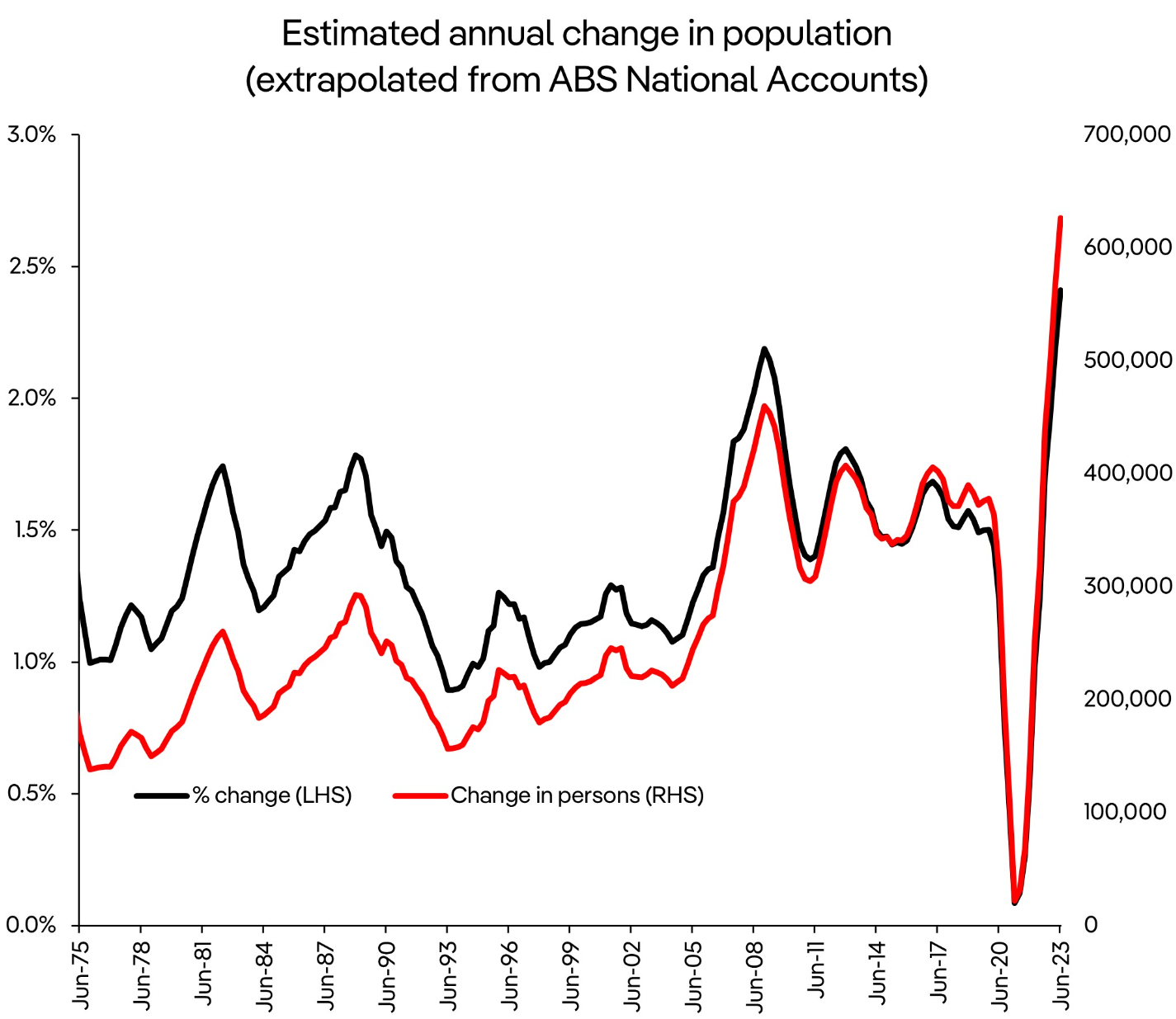
Source: Cameron Kusher (PropTrack)
According to the 2023 Intergenerational Report, released in August, Australia’s population will grow by 14 million people in the next 40 years, the equivalent of adding a combined Sydney, Melbourne, Brisbane, and Adelaide to the nation’s existing population. This extreme population growth will be driven by NOM of 235,000 people each year.
How will housing supply ever be able to keep up with such rapid population growth? It can’t.
Peter Tulip should face reality and acknowledge that reducing NOM to historical levels of roughly 100,000 per year is the most effective and cost-efficient solution to alleviate the housing crisis.
Furthermore, do Australians wish to live in high-rise apartment buildings? Because, with a population of 40.5 million and Sydney and Melbourne each having around nine million people, this will become the norm.
How will Australia ever make up for its existing shortages of roads, public transport, hospitals, and schools, let alone provide adequate infrastructure for an additional 14 million people? It’s an impossible task.
Peter Tulip conveniently ignores these realities, as well as the detrimental effects of his cherished mass immigration on Australia’s environmental carrying capacity and water supply.

